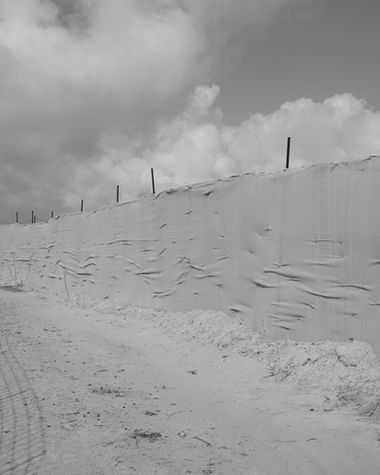PLACES
OF TRANSITION

Borders and edges have long been places of tension, where cultures, histories, and identities intersect and overlap. In Greece, a country with a long and complex history of migration, trade, and conflict, the borders and edges of the territory are particularly significant. By focusing on the border areas and their stories, the project aims to offer a diversified and multi-layered portrait of Greece, challenging simplistic notions of identity and belonging. Through this project, “Places of Transition,” we seek to contribute to a broader discussion about the complexity of borders and edges and their role in shaping our world today.
The “Places of Transition” project is a visual exploration of the four geographical extremes of Greece, namely the villages of the Tri-border area of northern Evros, Gavdos, Kastellorizo, and Othoni. The program is based on the art of photography as a means of capturing the visual subjectivity of the landscape, the people, and the interior spaces. Four photographers documented the four extreme points of Greek territory.
The northernmost point of Greece, the Tri-border area of Evros, consists of 8 villages and is located at the borders between Greece, Turkey, and Bulgaria, photographed by Haris Kakarouhas and Foteianna Linardou. This is a region marked by conflicts and population displacements. In recent years, the area has experienced intense influxes of refugees and migrants escaping economic deprivation, war, and persecution in the Middle East and Africa. This has brought the issue of border control to the forefront of political and social discussions, highlighting the complexities and challenges faced by the residents of these border villages.
The southernmost point, Gavdos, was photographed by Anna Paraskevidou and Symeon Chatzilidis. The island holds unique cultural and historical significance as it was a place of exile both during the interwar period and the civil war. The artists focused on the memories of individuals and their intergenerational roots, as the island, being an “edge,” served as a place of exile, on the close relationship between people and the sea, and on the strategic position of the island in the eastern Mediterranean.
The easternmost point of Greece, Kastellorizo, was photographed by Haris Kakarouhas. Kastellorizo, with a population of about 500 inhabitants, is of particular interest as its history is intertwined with the continuous movements of its residents due to trade and migration. The artist focused on the island’s rich maritime heritage, its strategic position in the Eastern Mediterranean, and the close relationship between people and the sea.
The westernmost point of Greece, the island of Othoni in the Ionian Sea, was photographed by Anna Paraskevidou and Symeon Chatzilidis. Othoni is an island with a population of about 350 inhabitants. Othoni has a rich history, with evidence of human habitation dating back to the Neolithic period. The island has been shaped by centuries of trade, piracy, and colonization, which have left their marks on its culture and architecture. The artists explored the rich history and cultural heritage of the island, shaped by its position at the crossroads of the Mediterranean.
The purpose of the project was to map the border areas of Greece and construct a visual narrative of the human geography of the borders, while simultaneously recording the diverse characteristics of the cultural diversity present in our country.
The goal is to present the result to both the people we documented and the national audience, to understand the complex and multi-layered relationships that structure the border areas, how borders shape human geography, and the role they play in our understanding of the world around us.
We hope the artistic material will serve as a mirror of consciousness for an in-depth understanding of our identity.
The project is funded and supported by the Ministry of Culture
and is a collaboration between the Art Traces and Luminous Eye.
For further information & purchase enquiries please contact:
Symeon Chatzilidis
+30 6934482149
Haris Kakarouhas
+30 694 4836717
















